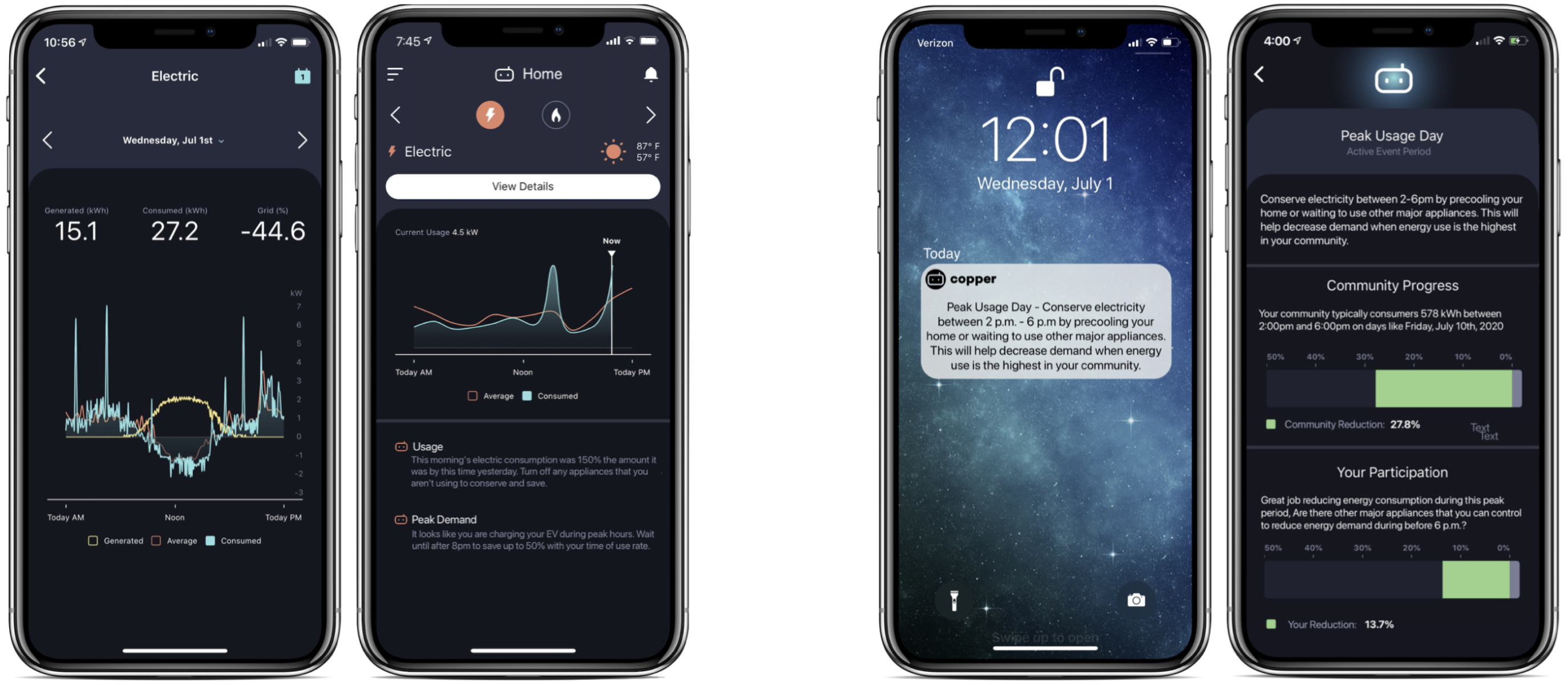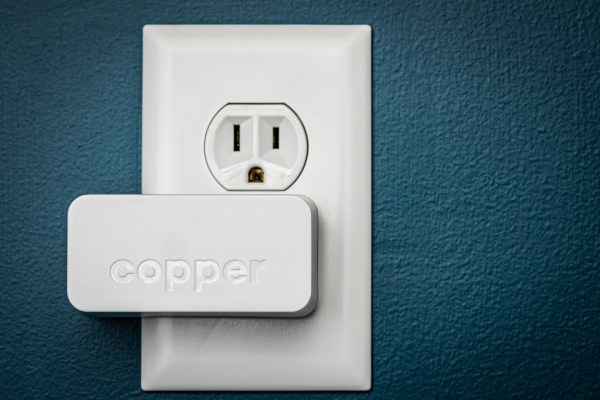Utility companies have a problem: Their “smart grids” were created to solve billing problems from a decade ago, not the needs and expectations from 2022 consumers with electric cars, solar panels and an obsession with real-time data. Copper Labs just raised $5.5 million to help them solve that problem, with an elegant little hardware device that serves as a bridge between the low-resolution smart meters and the consumer’s internet connection.
“The problem is even the most sophisticated electric Smart Grid deployments right now are only telling utilities what happened yesterday, and only in 15-minute intervals,” says Dan Forman, CEO at Copper Labs. “A lot of them are only getting that data once every 30 days. If you go beyond electricity into gas and water, most of those guys are still accessing data once every 30 days. The pace of disruption on the grid is not being matched by the pace of innovation. We’re helping utilities find more cost-effective ways to deliver the solutions they need.”
The company raised $5.5 million led by Clean Energy Ventures (CEV), a venture capital firm funding early-stage climate tech innovation, with follow-on participation from National Grid Partners and Blue Bear Capital. With the new round of funding, Copper Labs plans to grow its sales, engineering and marketing teams over the next year to accelerate adoption nationally across utility territories. In addition to the funding, Copper Labs welcomes Nora Mead Brownell, Clean Energy Ventures venture partner and former FERC Commissioner, to its board of directors.
“The Copper Labs team is on a mission to help utilities plan for a future with strained and limited resources all while recreating delivery systems fit for purpose,” said Brownell. “I’m excited to support the team as they empower customers and partner with mature industries adapting to rapidly changing externalities for a more sustainable future.”
Copper Labs is essentially unlocking a trove of data the utility companies haven’t been able to access to date — especially important in a world where real-time data is a potential driver for behavioral change. It’s no good, for example, to tell a consumer that they were charging their Tesla during peak hours 11 days ago — at that point, the end-user can’t remember why they plugged their car in. At that point, the damage to their electrical bill — and the environment — is already done.
“Historically, on the residential side, demand management programs were primarily targeting connected smart thermostats, enabling [them] to reduce load during peak periods. That way, the utilities reduce the reliance on expensive and dirty gas peaker plants. The challenge with that is that connected smart thermostats are installed in less than 20% of U.S. homes, and maybe half of those individuals sign up for these control programs,” explains Forman. “It doesn’t cover all the other problems that are coming down the line — EV chargers, for example. You need not only real-time grid edge intelligence, but a channel to engage targeted users. So for example, if we can see who’s charging an EV charger during peak hours, it is high-value information for a utility company. They can then target that individual with an incentive to curtail the load.”

The Copper Labs mobile app gives home owners an up-to-the-minute view of their power consumption and offers actionable insights and incentives to save power/water/gas. Image Credits: Copper Labs
The company has a few different solutions; an in-home bridge that connects existing smart meters to an internet connection, and a neighborhood-scale solution that can do the same for anything from dozens to thousands of homes.
“Some Smart Grid meters have a ZigBee Home Area Network embedded. We can make a secure handshake and get that data back in about 30-second intervals instead of waiting until the next day. To install it, the utility would send a device in the mail. You’d install the Copper mobile app, and connect it all up,” explains Forman, holding up a laptop-charger-sized brick that plugs into a power socket. “You simply plug this thing into the wall, and everything it does is wireless.”
The neighborhood solution does the same thing and needs its own internet connection, either wired or over existing wireless networks. It can be installed on a utility pole and service a larger number of homes.
“Our neighborhood-level device will get about one-minute interval data from hundreds of homes from a single device,” says Forman. “The value there is obviously a dramatic reduction in home hardware costs. No need to ask the consumer to do anything, and no need to rely on the consumer’s Wi-Fi because you’ve got a dedicated broadband or wireless network.”
The cool thing is that Copper’s device can also track solar production meters, to show what electricity is being generated and delivered into the grid. The company claims that this is a unique view, especially powerful for the utility companies that don’t have visibility into the distributed rooftop solar arrays. The app also enables anomaly detection, usage data and additional insights.
“With or without smart meters, Copper Labs opens up a high-frequency data trove for consumers, utilities and smart home providers to enable faster decision making,” said Dr. Carolin Funk, partner at Blue Bear Capital.
In a nutshell, then, the issue the company is solving is making legacy grids smarter than even the most cutting-edge of smart grids, bypassing the slower innovation cycles of the meter vendors. In addition, Copper’s solution is far cheaper, quicker and more environmentally conscious to install on a utility pole, than replacing a hundred perfectly fine and serviceable power meters at the home level.
If this sounds like something that the utility companies should have been able to solve themselves, you are correct — but it’s interesting to highlight the challenge of what is being solved here; the number of radios and wireless connections that need to be present for a solution like this to work is mind-boggling.
“The thing we’re focused on is solving really hard RF problems to where the same device can do electric, gas and water. And if you look back to the new neighborhood-level thing that I mentioned, gas and water utilities don’t have an effective path to get to traditional advanced metering infrastructure,” explains Forman.
